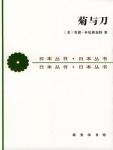Chapter 1 Foreword to the updated edition
Since the Chinese translation was published by the Commercial Press in 1991, it has been reprinted 14 times, with a printing run of more than 100,000 copies.In recent years, due to the attention paid to Sino-Japanese relations, the number of prints of this book has increased significantly, and several translations similar to this one have appeared. The price is higher than this translation, but the number of prints is not low.This shows that the majority of readers in our country urgently need to understand Japan.Rich in information, vivid in writing, and full of enlightening insights, this book has become a popular book for understanding Japan.
This situation has also attracted the attention of the Chinese and Japanese media. In December 2005, the Beijing-based reporter of Japan’s “Yomiuri Shimbun” specially came to the Commercial Press and Tianjin to interview Chen Yingnian, one of the editors in charge of the translation, and Lu Wanhe, one of the translators, and then wrote a report, which was published in The international edition of the newspaper on December 30. In February 2006, a reporter from Nandu Weekly interviewed three scholars (Lv Wanhe, Sun Ge, and Li Changsheng) specifically for this book. In late March, a long-form interview was published on the journal’s reading section, titled: “A The academic book called "The Chrysanthemum and the Sword" is still selling well."
More than ten years ago, when the Commercial Press included this book in the "Japanese Series", it proposed whether to revise it.Since several translators were very busy at the time, it was not possible to revise it.Now, the editors of the Commercial Press once again propose "revisions and additions", of course we are very happy.One of the translators is relatively free. With the strong support and help of the other two translators working in Japan, it took nearly three months to read, revise and make additions to the whole book.The main points are:
1.The subtitle of the title of the book, originally translated as "Types of Japanese Culture", was changed to "Models of Japanese Culture" this time. See the footnote of the appendix "Ruth Benedict's Biography" for the reason (Note ② on page 285 of this book ). The word "giri" was originally translated as "giri".After the revision, Japanese Chinese characters will be restored without additional translation.See the footnote for the first occurrence of the word for the reason (see page 107 of this book).By the way: The original book is written by Americans in English about Japan.The Japanese translation strives to restore Japanese terms and quotations related to Japan.When translating into Chinese, we also kept Japanese Chinese characters as much as possible for technical terms and quotations involving Japanese.Based on this principle, some translations of this revision have restored Japanese Chinese characters, which are not listed.
2.Two materials have been added as the "Appendix" of this book: (1) "Biography of Ruth Benedict", (2) "Comments on "The Chrysanthemum and the Sword" by Japanese Scholars".After reading it, and then looking at these two materials, it should be beneficial to the study of Japan and even the improvement of the level of social science research as a whole.Both materials are compiled based on the limited data we have seen, so they are definitely not comprehensive.Both of them involve specialized disciplines, and experts and readers are kindly requested to correct me.
3.About 110 annotations have been added, mainly about historical facts, proper names, and allusions, and there are also several points that the original work obviously deviates from historical facts.About 80 pictures were selected and matched. The principle of matching is to closely combine the content and annotations of this book.The purpose is to facilitate reading and comprehension.
4.On the basis of the index of the original English work, the index of the translated version has been edited with some additions, deletions and mergers.
5.The original "Translator's Preface" is basically unchanged.Only three sentences have been added, and a small paragraph of text has been deleted (to avoid duplication with the attached "biography").
6.The translations of the whole book are mainly textual revisions and additions, and there are also corrections of individual mistranslations.For example, I saw on the Internet that a reader made comments on a small note on page 132 of the original Chinese translation, and this revision has made improvements (see note ⑤ on page 170 of this book), and I would like to express my gratitude here.Another example, "Pillow grass paper" on page 196 of the original Chinese translation was mistakenly translated as "Pillow straw", which has been corrected.
It is a rare revision, and it should be carefully revised word by word according to the English original and the Japanese translation.However, it is not easy to borrow the original English works. The copy copies at hand have been stored for many years, and the handwriting is blurred. As a note, some better illustrations have not been searched in time, and the translation is inappropriate and inaccurate, and even mistranslations still have to be said to be "inevitable". Readers are welcome to forgive and criticize and correct.
During the proofreading period, Mr. Hu Bei from the School of Foreign Languages, Tianjin University of Technology sent important materials such as the Japanese translation of Benedict's report to the US War Intelligence Agency before the book was written, which has been marked where used, and I would like to thank you!

